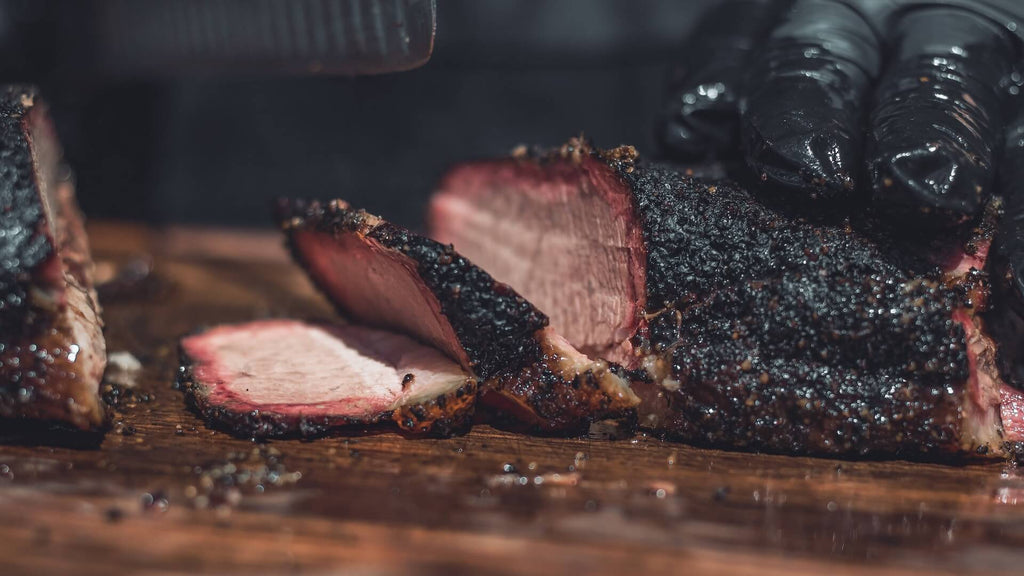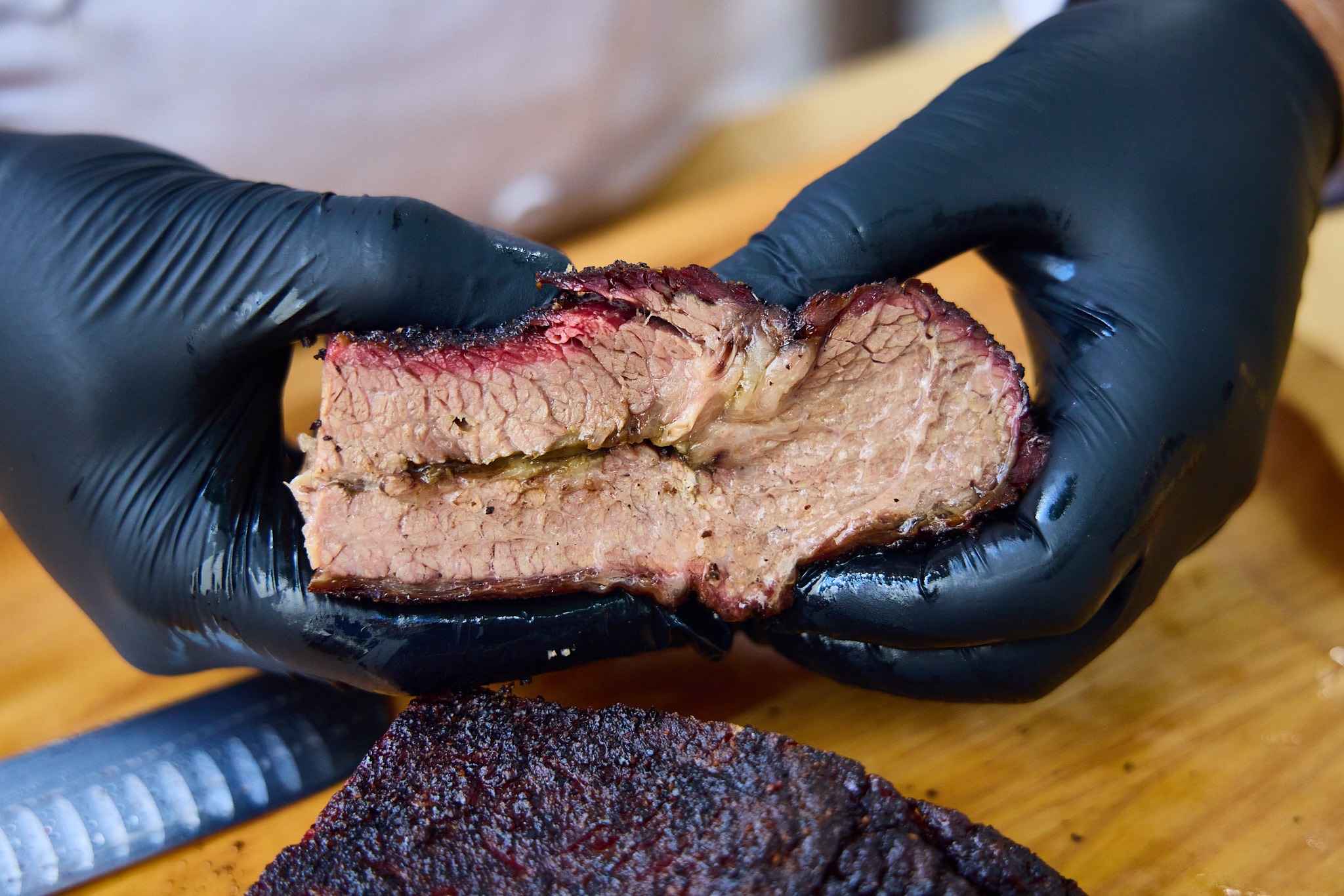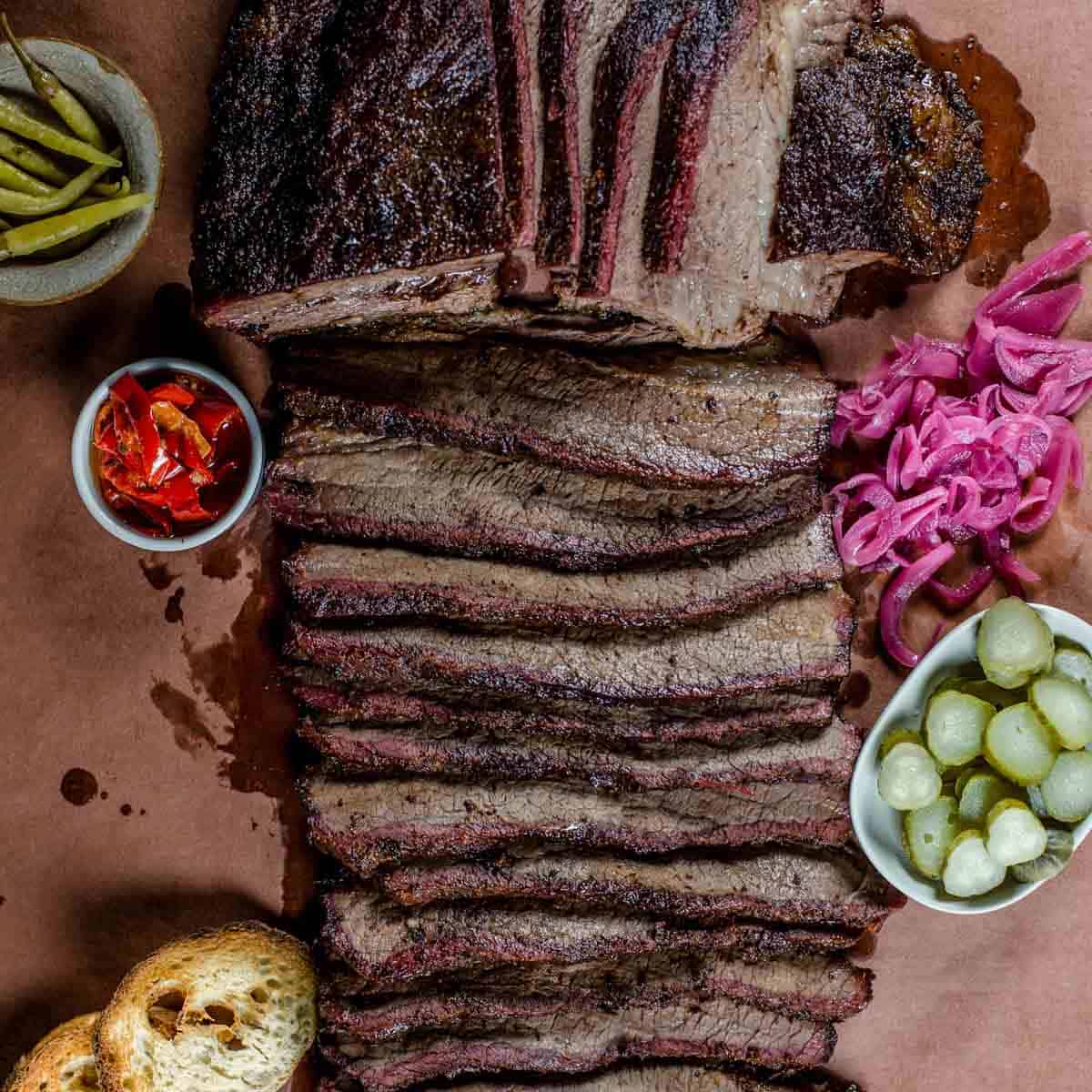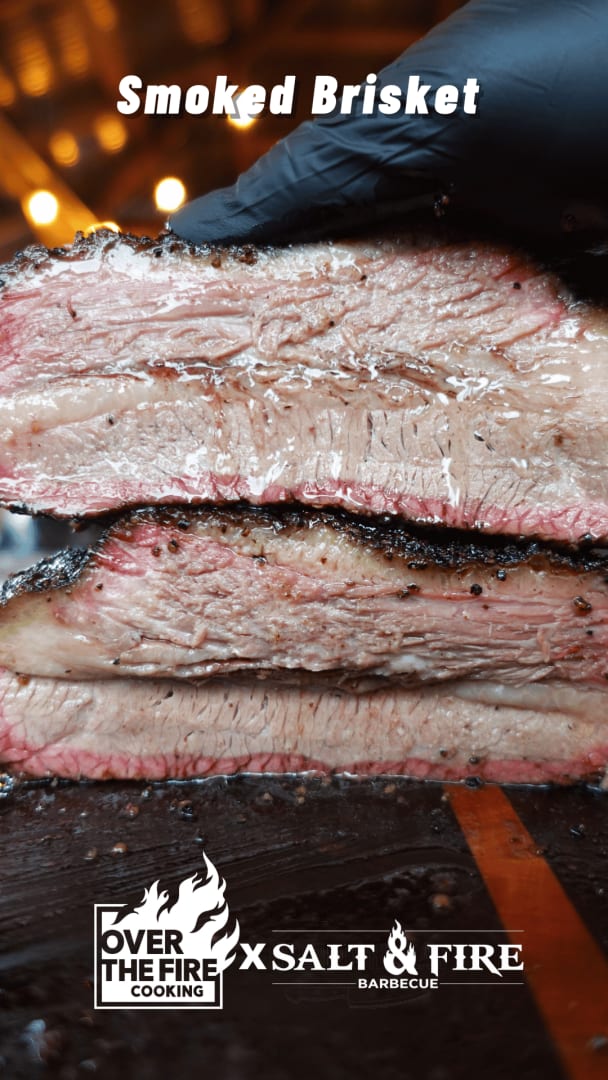Understanding Brisket Wrapping

The process of wrapping brisket during cooking is a technique that many barbecue enthusiasts swear by. When the brisket reaches a certain temperature, it is wrapped tightly in foil or butcher paper, allowing it to continue cooking in its own juices. This method helps to tenderize the meat, retain moisture, and enhance flavor. Wrapping brisket also helps to shorten the cooking time by speeding up the breakdown of connective tissues. However, it’s important to carefully consider factors such as the desired tenderness and bark development before deciding on the wrapping temperature. With the right approach, brisket wrapping can be a game-changer in achieving that perfect, mouthwatering result.
Benefits Of Wrapping Brisket During Cooking
Wrapping brisket during cooking offers several benefits that contribute to a delicious and tender end result. First and foremost, wrapping helps to retain the meat’s natural juices, resulting in a juicier and more flavorful brisket. Additionally, wrapping helps to tenderize the meat by allowing it to cook in its own juices, breaking down the tough connective tissues. The wrapping process also assists in shortening the cooking time, as it speeds up the breakdown of the brisket’s collagen. Lastly, wrapping helps to create a beautiful and flavorful bark on the brisket, adding an extra layer of texture and taste.
Effect Of Different Wrapping Temperatures On Brisket
The temperature at which you choose to wrap your brisket can have a significant impact on the final outcome. When wrapping at 160°F, the brisket is cooked at a lower temperature, resulting in a more tender and juicy meat. However, the bark may not be as crispy. Wrapping at 180°F strikes a balance between tenderness and bark quality. Finally, wrapping at 200°F can yield a rich and flavorful bark, but there is a higher risk of the meat becoming dry. It’s important to consider your desired outcome and choose the wrapping temperature accordingly.
Factors To Consider

When deciding on the wrapping temperature for your brisket, there are several factors to consider. Firstly, the desired tenderness of the meat. Wrapping at a lower temperature, such as 160°F, will result in a more tender brisket, while a higher wrapping temperature like 200°F may yield a firmer texture. Secondly, consider the desired bark quality. Higher wrapping temperatures can help achieve a rich and flavorful bark, but there is a risk of the meat drying out. Lastly, take into account the total cooking time and whether you prefer a faster or slower cooking process. By considering these factors, you can determine the ideal wrapping temperature for your brisket.
Importance Of Meat Temperature Before Wrapping
Before wrapping a brisket, it is crucial to consider the internal temperature of the meat. This is because the wrapping process helps to lock in moisture and tenderize the brisket. If the meat has not reached the desired temperature before wrapping, it may not have had enough time to properly cook and become tender. Wrapping too early can result in a tough and undercooked brisket. Therefore, it is recommended to wait until the brisket reaches an internal temperature of around 160°F before wrapping, ensuring that it is properly cooked and ready for the next stage of the cooking process.
Different Wrapping Methods For Brisket
Different wrapping methods for brisket include using aluminum foil and butcher paper. Aluminum foil is a popular choice and is often referred to as the Texas Crutch method. To wrap the brisket in foil, you’ll need two arm-length pieces of heavy-duty foil. Lay the pieces on top of each other and place the brisket on top. Fold the foil tightly around the meat, ensuring it is completely sealed. Another option is to use butcher paper, which allows for a bit more airflow, resulting in a slightly different texture. Whichever method you choose, make sure to wrap the brisket securely to retain moisture and enhance tenderness.
Wrapping At 160°F

When it comes to wrapping brisket, one of the popular temperatures to do so is at 160°F. At this stage, the brisket has typically developed a nice bark and has absorbed enough smoke flavor. Wrapping the brisket at 160°F helps to seal in the moisture and keep the meat tender. The tightly wrapped foil or butcher paper creates a steamy environment, allowing the meat to break down further and become even more succulent. However, it’s important to note that wrapping at 160°F may result in a softer bark compared to wrapping at higher temperatures. So, if you prefer a crispier and more textured bark, you may want to consider wrapping at a higher temperature.
Pros And Cons Of Wrapping Brisket At 160°F
One of the benefits of wrapping brisket at 160°F is that it helps to seal in moisture and keep the meat tender. The tightly wrapped foil or butcher paper creates a steamy environment, further breaking down the meat and making it succulent. However, wrapping at 160°F may result in a softer bark compared to higher temperatures, which may be a drawback for those who prefer a crispier texture. It’s important to note that individual preferences may vary, so it’s always worth experimenting to find the perfect wrapping temperature for your taste.
Tips For Achieving The Best Results When Wrapping At This Temperature
- Monitor the internal temperature: Use a meat thermometer to keep an eye on the brisket’s temperature. It’s crucial to wrap the meat at precisely 160°F to ensure optimal results.
- Prepare the wrapping material: Whether you choose aluminum foil or butcher paper, make sure it’s large enough to fully enclose the brisket and seal in the steam and juices.
- Seal the wrap tightly: The key to trapping moisture is to create a tight seal. Be careful not to puncture the wrap, as this can cause the meat to dry out.
- Place the wrapped brisket back on the smoker: Return the wrapped brisket to the smoker and continue cooking until it reaches the desired internal temperature, typically around 200°F.
- Let it rest before serving: Once the brisket is cooked, allow it to rest for at least 30 minutes before slicing. This will help the juices redistribute and result in a more tender and flavorful meat.
Remember, practice makes perfect when it comes to brisket wrapping. Experiment with different wrapping materials and techniques to find what works best for you and your taste preferences.
Wrapping At 180°F

Wrapping brisket at 180°F can have its advantages and drawbacks. At this temperature, the brisket is already well-cooked and has developed a beautiful bark. Wrapping it in this stage helps to retain moisture and prevent it from drying out further. However, wrapping at 180°F may soften the bark and result in a less crispy texture. It’s important to consider personal preference when deciding to wrap at this temperature. Ultimately, experimenting with different wrapping temperatures will help you determine the perfect technique for achieving your desired brisket flavor and texture.
Effects Of Wrapping Brisket At 180°F
When wrapping a brisket at 180°F, it has already reached a significant stage of cooking. Wrapping it at this temperature helps to retain moisture and prevent further drying out. However, it’s important to note that wrapping at 180°F may soften the bark, resulting in a less crispy texture. This can be a drawback for those who prefer a crispy bark. However, if retaining moisture is a priority, wrapping at 180°F can help achieve a juicier end product. Ultimately, personal preference plays a vital role in determining the wrapping temperature for your brisket.
How This Temperature Impacts The Tenderness And Juiciness Of The Brisket
When wrapping a brisket at 180°F, it has already reached a significant stage of cooking. Wrapping it at this temperature helps to retain moisture and prevent further drying out. However, it’s important to note that wrapping at 180°F may soften the bark, resulting in a less crispy texture. This can be a drawback for those who prefer a crispy bark. However, if retaining moisture is a priority, wrapping at 180°F can help achieve a juicier end product. Ultimately, personal preference plays a vital role in determining the wrapping temperature for your brisket.
Wrapping At 200°F

Wrapping a brisket at 200°F is a popular choice among pitmasters. This higher wrapping temperature allows for more time for the brisket to develop a crispy, caramelized bark. Wrapping at 200°F also helps to retain moisture and lock in flavors, resulting in a tender and juicy end product. However, it’s crucial to monitor the internal temperature of the brisket closely to prevent overcooking. With this wrapping temperature, you can achieve a balance between a flavorful bark and a moist, succulent brisket. Experiment with different wrapping temperatures to find the perfect technique that suits your taste preferences and yields the best results.
Benefits And Drawbacks Of Wrapping Brisket At 200°F
Wrapping a brisket at 200°F offers several benefits and drawbacks. On the positive side, this higher wrapping temperature allows for a longer cooking time, resulting in a crispy and caramelized bark. It also helps to retain moisture, ensuring a juicy and tender brisket. However, there are a few drawbacks to consider. Wrapping at 200°F increases the risk of overcooking the brisket if not monitored closely. Additionally, the higher temperature can sometimes soften the bark, leading to a less pronounced texture. Overall, finding the right balance is key to achieving the perfect brisket when wrapping at 200°F.
Achieving The Perfect Brisket Texture With This Wrapping Temperature
Wrapping a brisket at 200°F can help achieve the perfect texture that every pitmaster desires. This higher wrapping temperature allows for a longer cooking time, leading to a crispy and caramelized bark on the outside. The brisket retains moisture, ensuring a juicy and tender interior. The combination of a well-developed bark and tender meat creates a mouthwatering texture that will leave your guests begging for more. However, it is crucial to monitor the brisket closely to avoid overcooking. With the right balance, wrapping at 200°F can result in a brisket with a perfect blend of texture, flavor, and moisture.
Conclusion

In conclusion, finding the perfect wrapping temperature for your brisket is crucial in achieving the desired texture, flavor, and tenderness. While there are various opinions on the ideal temperature, wrapping the brisket at 200°F has shown promising results. This temperature allows for a longer cooking time, resulting in a well-developed bark and juicy interior. However, it is important to monitor the brisket closely to avoid overcooking. By considering factors such as meat temperature and wrapping method, you can elevate your brisket technique and impress your guests with a mouthwatering barbecue experience.
Choosing The Ideal Wrapping Temperature For Your Brisket
Choosing the ideal wrapping temperature for your brisket is crucial in achieving the perfect texture and flavor. While there are different opinions on the best temperature, wrapping the brisket at around 200°F has shown promising results. This temperature allows for a longer cooking time, resulting in a well-developed bark and a juicy interior. However, it is important to monitor the brisket closely to avoid overcooking. By considering factors such as meat temperature and wrapping method, you can elevate your brisket technique and impress your guests with a mouthwatering barbecue experience.
Common Mistakes To Avoid When Wrapping Brisket.
When it comes to wrapping brisket, there are a few common mistakes that can affect the outcome of your barbecue. One mistake to avoid is wrapping the brisket too early. It’s important to wait until the meat reaches the desired internal temperature before wrapping to ensure it has enough time to develop a good bark. Another mistake is wrapping the brisket too tightly. This can cause the juices to be squeezed out, resulting in dry meat. Additionally, be careful not to tear the wrapping material, as this can lead to uneven cooking. Lastly, avoid rushing the resting period after unwrapping the brisket. Allowing the meat to rest for a sufficient amount of time will help retain its juiciness. By avoiding these common mistakes, you can ensure a delicious and tender brisket every time.
FAQ About What Temp To Wrap Brisket: Perfecting Your Brisket Technique
Q: What is the ideal internal temperature to wrap brisket?
A: The ideal internal temperature to wrap brisket is around 160-170°F (71-77°C).This is the sweet spot to ensure the meat has absorbed enough smoke flavor and has reached the stall point before wrapping.
Q: Why is it important to wrap brisket at a specific temperature?
A: Wrapping brisket at the right internal temperature helps in retaining moisture, accelerating the cooking process, and ensuring a tender end result. It also prevents the brisket from drying out during the cooking process.
Q: What are the benefits of wrapping brisket during cooking?
A: Wrapping brisket helps in maintaining moisture levels, enhancing tenderness, and speeding up the cooking time. It also allows the flavors to concentrate within the meat, resulting in a more flavorful end product.
Q: Should I wrap my brisket in foil or butcher paper?
A: The choice between foil and butcher paper comes down to personal preference. Foil provides a tighter seal, while butcher paper allows for some breathability. Experiment with both to see which method yields the desired results for your brisket.
Q: How long should brisket be wrapped for?
A: Brisket should be wrapped for approximately 2-3 hours, or until it reaches the desired tenderness. It’s important to monitor the internal temperature and tenderness to determine when it’s ready to unwrap and complete the cooking process.

Johnny Knuckles Knock-out BBQ is a culinary haven for barbecue enthusiasts, offering a fusion of traditional BBQ and tantalizing street fare. Our secret to delivering mouthwatering dishes lies in our meticulous preparation process. Each cut of meat is lovingly hand-rubbed and slow-smoked over 100% hardwood, creating a symphony of flavors that will leave your taste buds dancing. Whether planning a special event or simply craving an unforgettable meal, Johnny Knuckles Knock-out BBQ is here to elevate your dining experience. Our catering services are designed to bring the sizzle and aroma of our delectable BBQ to your event, ensuring that every guest leaves with a full belly and a smile.